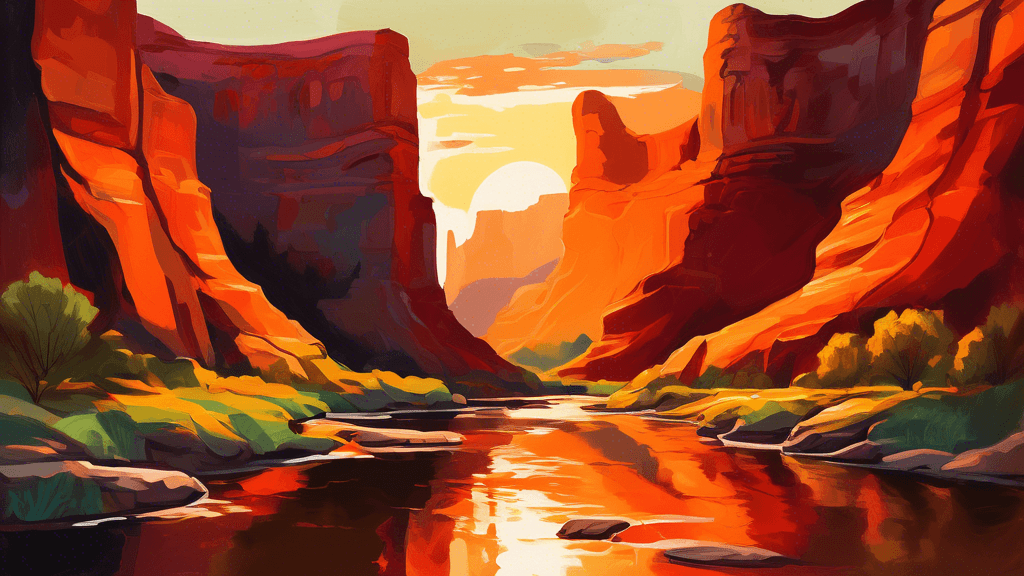
Exploring the Majestic Beauty of Canyons: Nature's Artful Valleys
Share
The Allure of Canyons: Nature's Masterpiece
Have you ever stood on the edge of a canyon and looked out over the weaving river below, wondering about the forces that sculpted such incredible vistas? Canyons, with their dramatic cliffs and deep valleys, serve as awe-inspiring examples of nature's artistry, formed over millions of years through the relentless work of water and wind. But what is it exactly that draws us to these magnificent natural structures, and why should we make every effort to preserve them?
Formation of Canyons: A Geological Marvel
The process of canyon formation is a testament to the persistent power of nature. Most canyons were formed by the movement of rivers cutting through hard rock, a process known as erosion. This erosion, combined with the geological activity of the earth, like earthquakes and volcanic eruptions, has shaped these deep valleys, leaving us with breathtaking landscapes that challenge both our imagination and our understanding.
- River Erosion: Over time, rivers carve out the land through which they flow, creating deep and winding canyons.
- Tectonic Activity: Earthquakes and volcanic eruptions can create rifts in the earth’s surface, accelerating the process of canyon formation.
- Weathering: Wind and rain further sculpt and expand these natural wonders.
Iconic Canyons Around the World
From the vast Grand Canyon in the United States to the steep gorges of the Fish River Canyon in Namibia, canyons are uniquely crafted by their local climates and geographical histories. Each canyon tells a story of earth’s climatic shifts and geological transformations. Here’s a look at some notable examples:
- The Grand Canyon, known for its visually overwhelming size and its intricate and colorful landscape.
- The Yarlung Tsangpo Grand Canyon in Tibet, often credited as the deepest canyon in the world.
- Antelope Canyon in the United States, famous for its wave-like structures and light beams shining down in the narrow openings.
Nature's Influence: The Ecosystems Within Canyons
Canyons are not just beautiful to behold; they are vital to a diverse array of plant and animal life. The unique microclimates in these areas create habitats that can vary dramatically over relatively short distances.
A renowned expert in biogeography once stated, The microclimatic variation within canyons often results in a patchwork of habitats. These areas can be significantly cooler and wetter than the surrounding landscapes, making them refuges for a wide variety of species.
This biodiversity is crucial for the ecological health of the region. Canyons serve as natural corridors for wildlife migration and movement, and their rivers provide essential water sources to environments that might otherwise be too arid to support such complex ecosystems.
The Aesthetic and Cultural Significance of Canyons
Beyond their ecological and geological importance, canyons transcend into the realm of culture and art. They have been sacred sites in indigenous cultures and have inspired countless artists, photographers, and filmmakers with their majestic beauty and remote tranquillity. Canyons arouse a deep appreciation for nature’s creativity, reminding us of our tiny place within the broader environmental context.
Conservation Efforts and Why They Matter
Despite their rugged appearance, canyons are delicate ecosystems that face numerous threats from human activity. Pollution, water overuse, and land development are only a few of the challenges that can destroy these landscapes.
Conservationists emphasize the importance of protecting these natural treasures. As one expert wisely put it, What takes nature millions of years to create can be destroyed in just a few decades. We owe it to ourselves and future generations to protect these environments.
Conservation efforts are crucial in ensuring that the beauty and diversity of canyons are preserved for years to come.
The Role of Eco-Tourism
Eco-tourism plays a significant role in canyon conservation, facilitating a sustainable way for people to appreciate and experience these wonders without harming them. By supporting local economies and raising awareness of the natural and cultural importance of these environments, eco-tourism helps fund conservation actions and motivates policies that prioritize nature preservation.
Conclusion: Our Part in Preserving Nature's Art
Canyons provide us with invaluable ecological benefits, stunning landscapes for artistic inspiration, and connections to cultural heritage. They remind us of the earth's dynamic history and our responsibility to its future.
Let’s cherish and protect these dramatic, beautiful features of the natural world. Plan a visit, support local conservation efforts, and advocate for policies that protect these vital parts of our planet. Will you take part in preserving the majestic beauty of canyons for future generations to marvel at?





